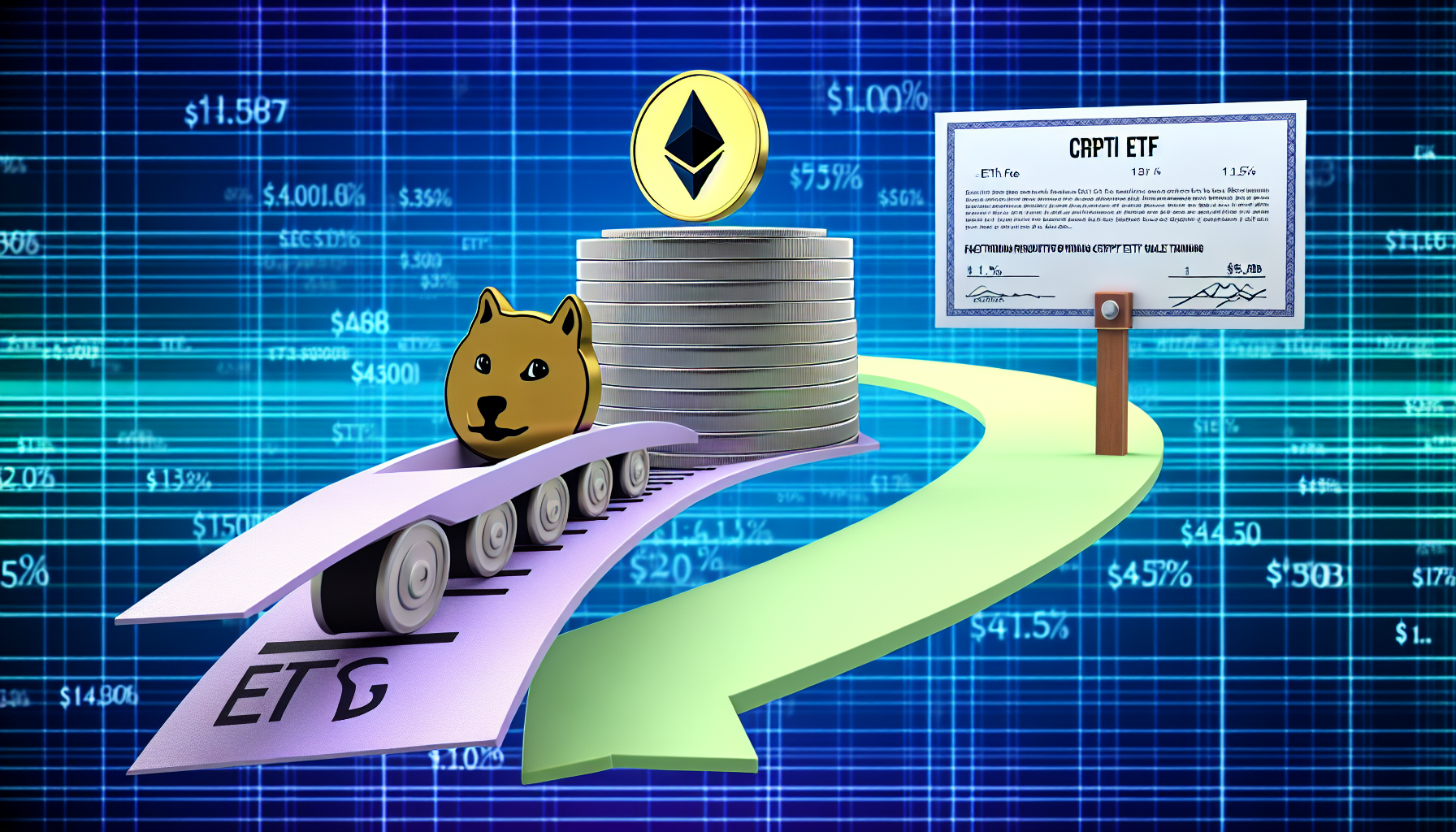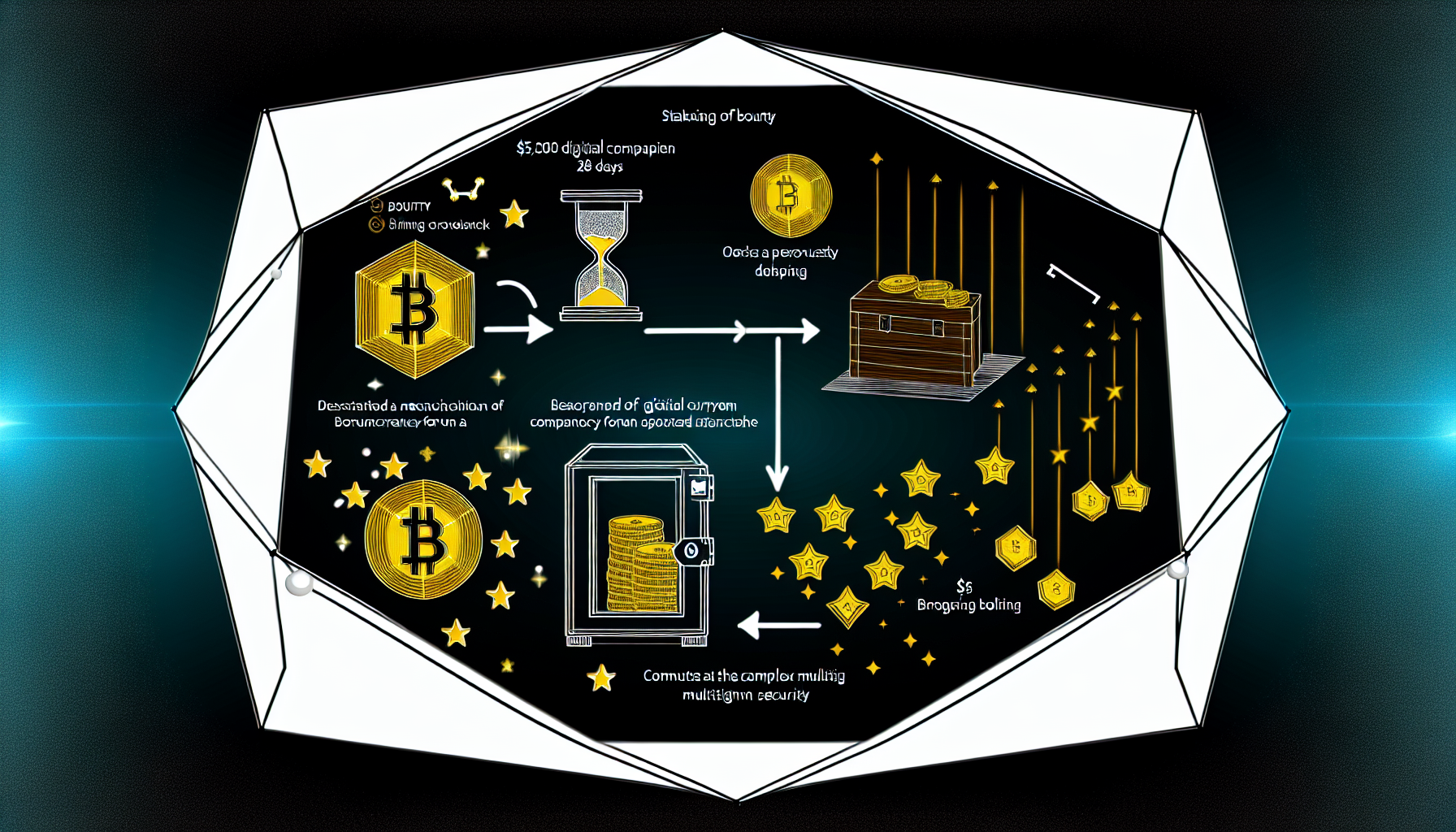A pivotal week for crypto ETFs reshaped the U.S. listing landscape. On September 18, 2025, the SEC approved generic listing standards that let NYSE, Nasdaq and Cboe fast-track spot products by cutting timelines from up to 240 days to roughly 75 days [1]. SEC Chair Paul Atkins framed the move as supportive of innovation, while issuers hailed it as a watershed shift in market access for digital assets [4].
Momentum is already visible. The Financial Times reported a Dogecoin ETF will list on Cboe with a 1.5% fee as ETF assets surpass $175 billion, igniting debate over memecoin risks versus retail demand [2]. Meanwhile, Citi set a year-end ether target of $4,300, with a $6,400 bull case and $2,200 bear case, even as Standard Chartered cited a more optimistic $7,500 scenario [3]. The SEC also cleared Grayscale’s Digital Large Cap Fund and approved options linked to a Cboe Bitcoin ETF index, signaling structural depth beyond single-asset exposure [5].
Key Takeaways
– Shows SEC cutting approval times from 240 to about 75 days on Sept 18, opening paths for Solana, XRP and Dogecoin ETFs by October 2025 [1]. – Reveals Dogecoin ETF debut on Cboe with 1.5% fee, while crypto ETF assets exceed $175 billion, amplifying retail attention and policy scrutiny [2]. – Demonstrates industry leaders and the SEC Chair backing innovation, as Bitwise labeled the listing overhaul a “watershed moment” unlocking Solana and XRP ETF markets [4]. – Indicates SEC approved Grayscale’s GDLC tracking the CoinDesk 5—BTC, ETH, XRP, SOL, ADA—and options tied to a Cboe Bitcoin ETF index [5]. – Suggests ETH targets reflect ETF demand and staking dynamics, with Citi at $4,300 base, $6,400 bull, and $2,200 bear versus $7,500 optimists [3].
SEC fast-tracks crypto ETFs with generic listing rules
By adopting generic listing standards, the SEC empowered major U.S. exchanges to list spot crypto ETFs via a streamlined process rather than bespoke, months-long orders for each product [1]. The new rules materially shorten the filing-to-launch window from as long as 240 days to around 75 days, effectively removing 165 days from the calendar for compliant issuers [1]. That accelerates market access for investors seeking regulated exposure to digital assets through exchange-traded products [1].
The 165-day reduction represents roughly a 69% cut to the maximum prior approval window, a structural change that could influence launch sequencing, marketing timelines and capital-raising plans across issuers [1]. Reuters reported exchange and industry officials expect the shift to be consequential for products tracking networks beyond bitcoin and ether, including Solana, XRP and Dogecoin [1]. Several of those could reach markets as early as October 2025 if filings meet the new criteria [1].
CNBC highlighted how SEC Chair Paul Atkins characterized the overhaul as innovation-friendly, and industry leaders echoed that sentiment [4]. Bitwise president Teddy Fusaro called the vote “a watershed moment,” arguing the standards should open the market to new crypto assets, specifically naming Solana and XRP as likely beneficiaries of the faster track [4]. That tone—regulatory openness paired with defined standards—sets the backdrop for the next wave of filings [4].
Dogecoin ETF debut reshapes crypto ETFs landscape
The Dogecoin ETF’s arrival is set to concentrate attention on memecoins within regulated wrappers at a time when total ETF assets in crypto have exceeded $175 billion, according to the Financial Times [2]. The product will list on Cboe with a 1.5% annual fee, or 150 basis points, a figure that becomes an immediate benchmark for any similar single-asset memecoin strategies [2]. Supporters tout the potential to capture retail demand; critics warn about investor confusion around volatile tokens [2].
Framed by the FT as a “watershed moment” for a more pro-crypto regulatory stance, the listing also tests whether high-awareness coins translate into sustainable ETF flows once placed within the discipline of daily creations, redemptions and market-making [2]. Expense ratios, tracking quality, and secondary-market liquidity will all be scrutinized in a product that aligns a pop-culture asset with institutional plumbing [2]. The fee level also invites competitive responses from future issuers [2].
More broadly, the Dogecoin ETF could act as a liquidity barometer for non-bitcoin crypto ETFs in the U.S. [2]. If it garners consistent volume and tight spreads, it may encourage additional filings for niche exposure, factor-tilted baskets, or thematic screens within crypto markets, provided they meet the generic listing criteria established by the SEC [1][2]. If volumes lag, issuers may recalibrate product design toward larger-cap assets [2].
ETFs pipeline: Solana, XRP and beyond amid crypto ETFs momentum
Reuters reported that, with the new standards, exchanges could list Solana and XRP ETFs as early as October 2025, assuming filings satisfy the generics-based requirements and issuers complete operational steps on time [1]. The ability for NYSE, Nasdaq and Cboe to move from individual adjudications to rule-based listings compresses uncertainty and may align U.S. timelines more closely with other jurisdictions that already support multi-asset or altcoin ETPs [1].
CNBC added that industry executives expect the shift to broaden the investable crypto ETF set beyond bitcoin and ether, with Bitwise specifically citing Solana and XRP as likely near-term candidates [4]. While precise launch dates will depend on final prospectuses, custodial readiness, and authorized participant arrangements, the 75-day window creates a practical guidepost for investors tracking product calendars and potential flows into newly tradable spot exposures [4].
Market outlook: Ether price targets intersect with crypto ETFs
Citi set ether’s base-case year-end target at $4,300, citing growing ETF interest and staking demand that could support network economics and investor positioning [3]. The bank outlined a $6,400 bull case if sentiment and flows outpace expectations and a $2,200 bear case if risk aversion returns, while Standard Chartered’s separate $7,500 figure stands as a more optimistic data point on the sell-side spectrum [3]. Citi also cautioned that prices remain sensitive to sentiment [3].
For investors, the faster listing regime for crypto ETFs adds a structural tailwind to the thesis behind those targets, particularly if broader altcoin ETFs launch and diversify the pool of regulated crypto exposures [1][3]. While the rule change does not guarantee price outcomes, it improves the channel through which institutional and retail capital can enter, making the ETF lens a more central input to valuation debates into year-end 2025 [1][3].
Grayscale’s large-cap approval and market-structure depth
Beyond individual assets, the SEC approved Grayscale’s Digital Large Cap Fund (GDLC), which tracks the CoinDesk 5 Index—BTC, ETH, XRP, SOL and ADA—signaling comfort with a rules-based basket approach under the new framework [5]. The decision broadens investor options across a curated multi-asset portfolio and tests the operational robustness of index-based crypto ETFs under generic listings [5]. It also complements single-asset offerings by offering diversified exposure within a single wrapper [5].
In parallel, the SEC approved options tied to a Cboe Bitcoin ETF index, a step that could deepen liquidity, enhance price discovery, and enable more nuanced hedging and income strategies around the ETP ecosystem [5]. Options activity often correlates with improved spreads and tighter arbitrage dynamics in the underlying ETFs, potentially benefiting both primary and secondary market functioning as crypto ETFs scale [5].
What faster approvals mean for timelines, fees and risk
A 75-day approval arc shortens marketing and due-diligence cycles for issuers, compressing the interval between early roadshows and first trades; that can concentrate investor education into tighter windows and bring launch-day spreads into focus more quickly [1]. For investors, it means a more predictable calendar for product debuts, potentially allowing staged allocations into new exposures rather than waiting most of the year under the prior 240-day ceiling [1].
Fee transparency will remain a differentiator. The Dogecoin ETF’s 1.5% annual charge establishes a clear reference point for memecoin strategies and invites competition on cost and structure as more filings appear [2]. Critics’ warnings about investor confusion underscore the need for precise disclosures on underlying asset mechanics, liquidity profiles, and volatility regimes—an area where standardized fact sheets and risk labeling can materially elevate retail outcomes [2].
Exchange readiness and regulatory signaling for crypto ETFs
NYSE, Nasdaq and Cboe now share a harmonized path to bring spot crypto ETFs to market, reducing procedural friction that previously fragmented timelines and outcomes across venues [1]. Uniform standards can strengthen competitive dynamics on market-making, spreads and marketing support while giving issuers multiple credible listing venues for similar products, potentially improving investor execution quality across platforms [1].
Regulatory tone also matters. CNBC reported SEC Chair Paul Atkins’s innovation-friendly framing, and Bitwise’s “watershed” characterization, which together signal a pragmatic approach that prizes clear rules alongside investor protection [4]. That signal may catalyze new filings calibrated to fit the generic criteria, including altcoin spot funds and diversified baskets, while keeping a focus on custody, surveillance and market integrity under the updated rule set [4].
Sources:
[1] Reuters – SEC paves way for crypto spot ETFs with new listing rules: www.reuters.com/sustainability/boards-policy-regulation/sec-paves-way-crypto-spot-etfs-with-new-listing-rules-2025-09-18/” target=”_blank” rel=”nofollow noopener noreferrer”>https://www.reuters.com/sustainability/boards-policy-regulation/sec-paves-way-crypto-spot-etfs-with-new-listing-rules-2025-09-18/
[2] Financial Times – Dogecoin ETF to begin trading in ‘watershed moment’ for pro-crypto SEC: www.ft.com/content/9ce02f45-1060-46a1-b37f-218d0037e621″ target=”_blank” rel=”nofollow noopener noreferrer”>https://www.ft.com/content/9ce02f45-1060-46a1-b37f-218d0037e621 [3] Reuters – Citi forecasts ether’s year-end target at $4,300: www.reuters.com/business/finance/citi-forecasts-ethers-year-end-target-4300-2025-09-16/” target=”_blank” rel=”nofollow noopener noreferrer”>https://www.reuters.com/business/finance/citi-forecasts-ethers-year-end-target-4300-2025-09-16/
[4] CNBC – SEC paves way for crypto spot ETFs with new listing rules: www.cnbc.com/2025/09/18/sec-paves-way-for-crypto-spot-etf-listing-rules.html” target=”_blank” rel=”nofollow noopener noreferrer”>https://www.cnbc.com/2025/09/18/sec-paves-way-for-crypto-spot-etf-listing-rules.html [5] CoinDesk – SEC Makes Spot Crypto ETF Listing Process Easier, Approves Grayscale’s Large-Cap Crypto Fund: www.coindesk.com/policy/2025/09/17/sec-makes-spot-crypto-etf-listing-process-easier-approves-grayscales-large-cap-crypto-fund/” target=”_blank” rel=”nofollow noopener noreferrer”>https://www.coindesk.com/policy/2025/09/17/sec-makes-spot-crypto-etf-listing-process-easier-approves-grayscales-large-cap-crypto-fund/
Image generated by DALL-E 3










Leave a Reply